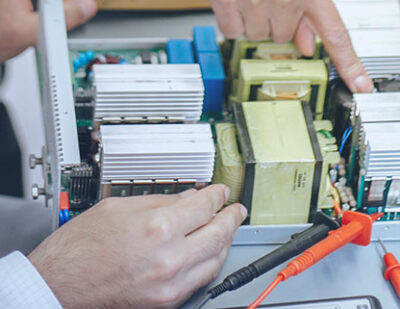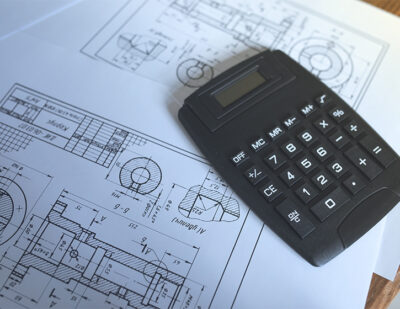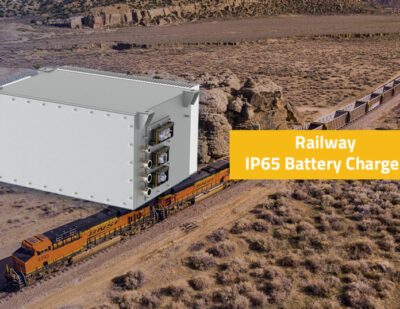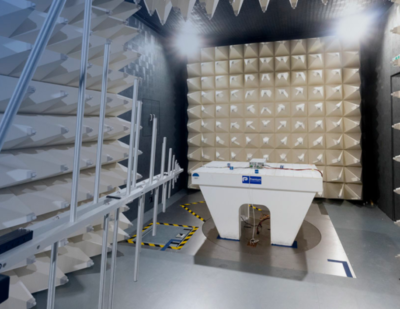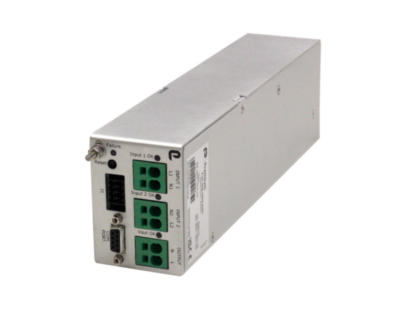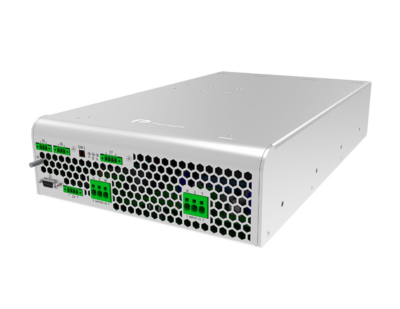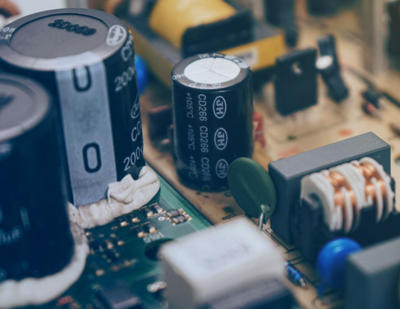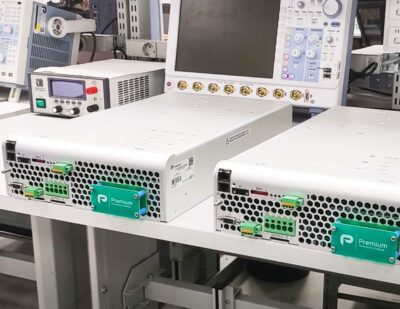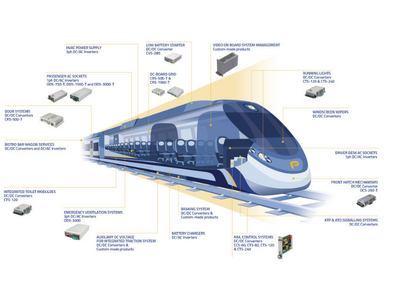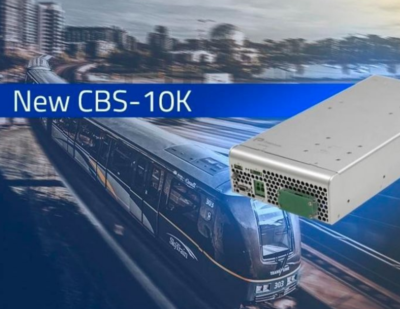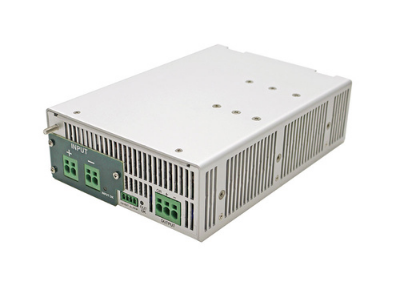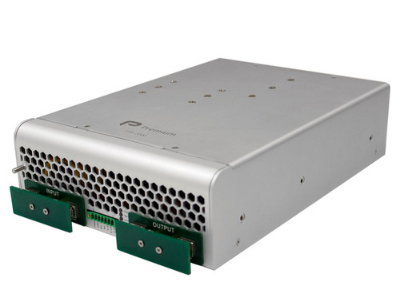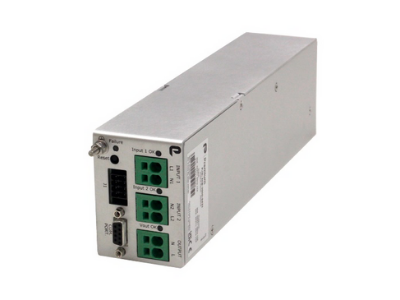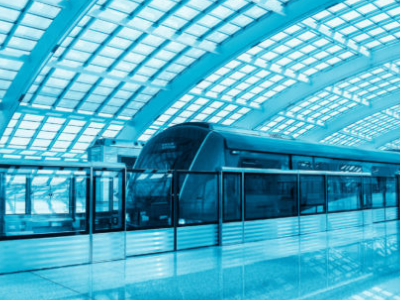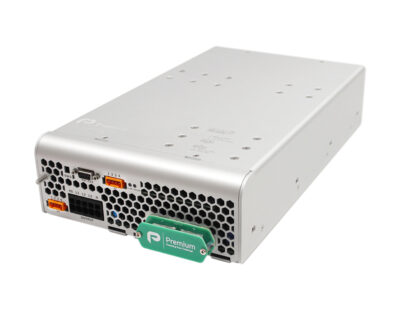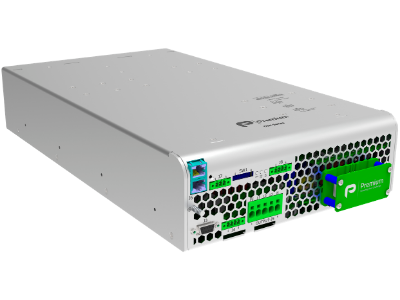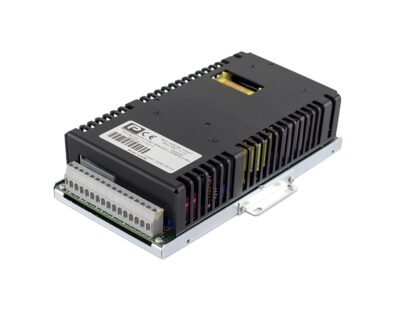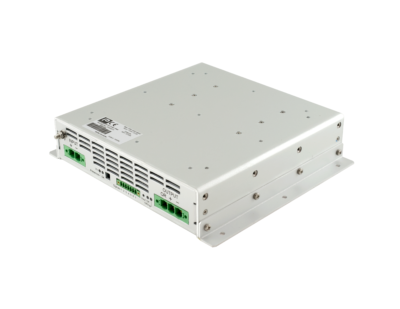This article intends to summarise the most important requirements that apply for power supply devices when considered as a component in railway applications.
Although there are several standards to take into consideration when installing electronic equipment in trams and trains, we will be focusing on the EN50155.

Most Relevant Standards
Just to name a few, here are the most relevant standards for power electronics applied in the railway industry.
IEC-60571 | EN-50155: Electronic equipment used on rolling stock
IEC-61287-1 | EN-61287-1: Power converters installed on board rolling stock – Part 1: Characteristics and test methods
IEC-60850 | EN-50163: Supply voltages of traction systems
IEC-62236-3-2 | EN-50121-3-2: Electromagnetic compatibility – Part 3-2: Rolling stock – Apparatus
IEC-62236-4 | EN-50121-4: Electromagnetic compatibility – Part 4: Emission and immunity of the signalling and telecommunications apparatus
IEC-62497-1 | EN-50124-1: Insulation coordination – Part 1: Basic requirements – Clearances and creepage distances for all electrical and electronic equipment
IEC-62498-1 | EN-50125-1: Environmental conditions for equipment – Part 1: Equipment on board rolling stock
IEC-61373 | EN-61373: Rolling stock equipment – Shock and vibration tests
EN-45545-2: Fire protection on railway vehicles – Part 2: Requirements for fire behaviour of materials and components
Introduction of Railway Certification
The EN 50155:2017 is a European standard covering electronic equipment used in rolling stock for railway applications. It is equivalent to the international IEC-60571 and covers aspects such as temperature, humidity, shock, vibration, and other parameters. A copy of the standard can be purchased from authorised standardisation bodies.
Trains have become more advanced from both a technical and passenger point of view, where additional information systems and safety-critical equipment come together. Electrical systems and functions, such as on-train monitoring sensors, climate control systems, lighting and door opening, are powered by the train’s battery system, which are usually located inside the locomotive of the power train, at the front or rear of the vehicle.
For electronic equipment to be installed, it must comply with certain requirements regarding environmental factors such as: shock, vibration, power supply, electromagnetic compatibility, overvoltage, ESD and transients that may occur during use.
What Are the Requirements of Electronic Equipment for Rolling Stock?
These systems must be rugged and able to support heavier use than a standard on-board computer, if they are used for telematics, engine control or other critical vehicle functions. Standards are based on the requirement that rolling stock systems will have to operate 24/7 for 30 years without failure. Therefore, rail control systems need to be designed to withstand the worst environmental conditions. It is also important that systems do not interfere with each other when installed in proximity, as space is often limited in control panels, so equipment can be mounted close together.
Basics of the EN50155 Standard
Temperature
Systems must be able to operate over a wide temperature range, from -40°C to +85°C, although only some parts must cover this temperature range for 10 minutes at start-up. Power supply must operate efficiently (85% or more) to reduce power consumption over a wide range of voltage and load conditions, as well as having thermal management.
Shock and Vibrations
Shock and vibration requirements are stringent for systems entering a rugged environment such as rolling stock. This requires a separate standard (EN 61373). The shock and vibration requirements are divided into three categories: carriage-mounted, bogie-mounted, and axle-mounted.
Power Supply
In trains, critical and emergency systems are fed by batteries to guarantee its function during a supply fail. The standard railway battery voltages are: 24, 36, 48, 72 and 110V. Battery voltage needs to range from -30% to +25% with variations of ±40% for 100ms, surges up to ±1kV and power interruptions up to 20ms. Therefore, power supplies are critical components and must be very robust to withstand the mentioned conditions.
Electromagnetic Interference
The EN50155 standard uses the EN50121-3-2 standard (railway applications, electromagnetic compatibility, rolling stock). This indicates the requirements that ensure that the equipment does not produce noise levels that may interfere with other nearby devices.
In this other article we talk about electromagnetic interference with a specific whitepaper.
At Premium PSU we have a wide range of DC/DC converters and DC/AC inverters specially designed to comply with EN50155 standard. We also have an extended experience developing custom designs to ensure protection and quality in harshest environments.
Download the railway solutions brochure.
This article was originally published by Premium Power Supplies.


